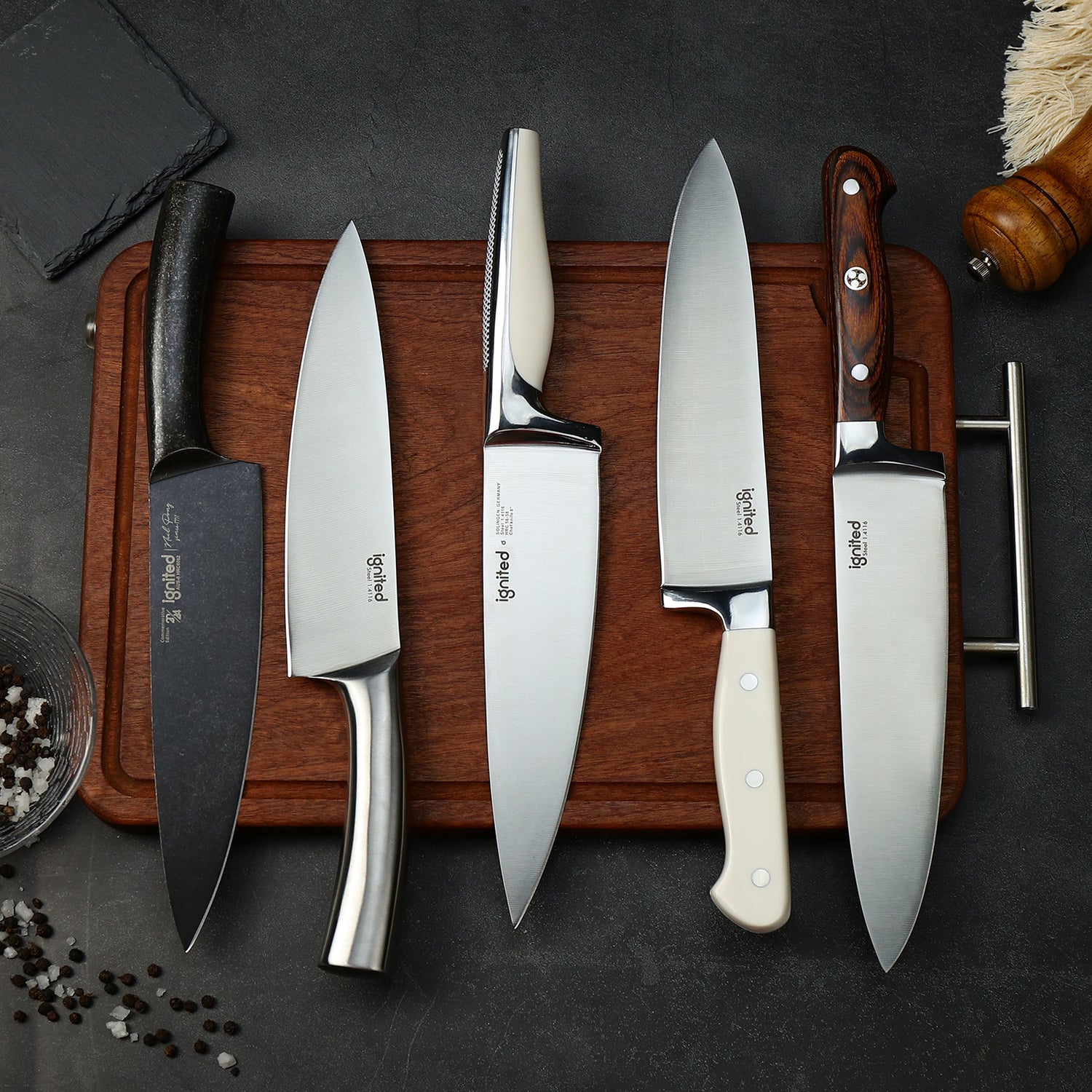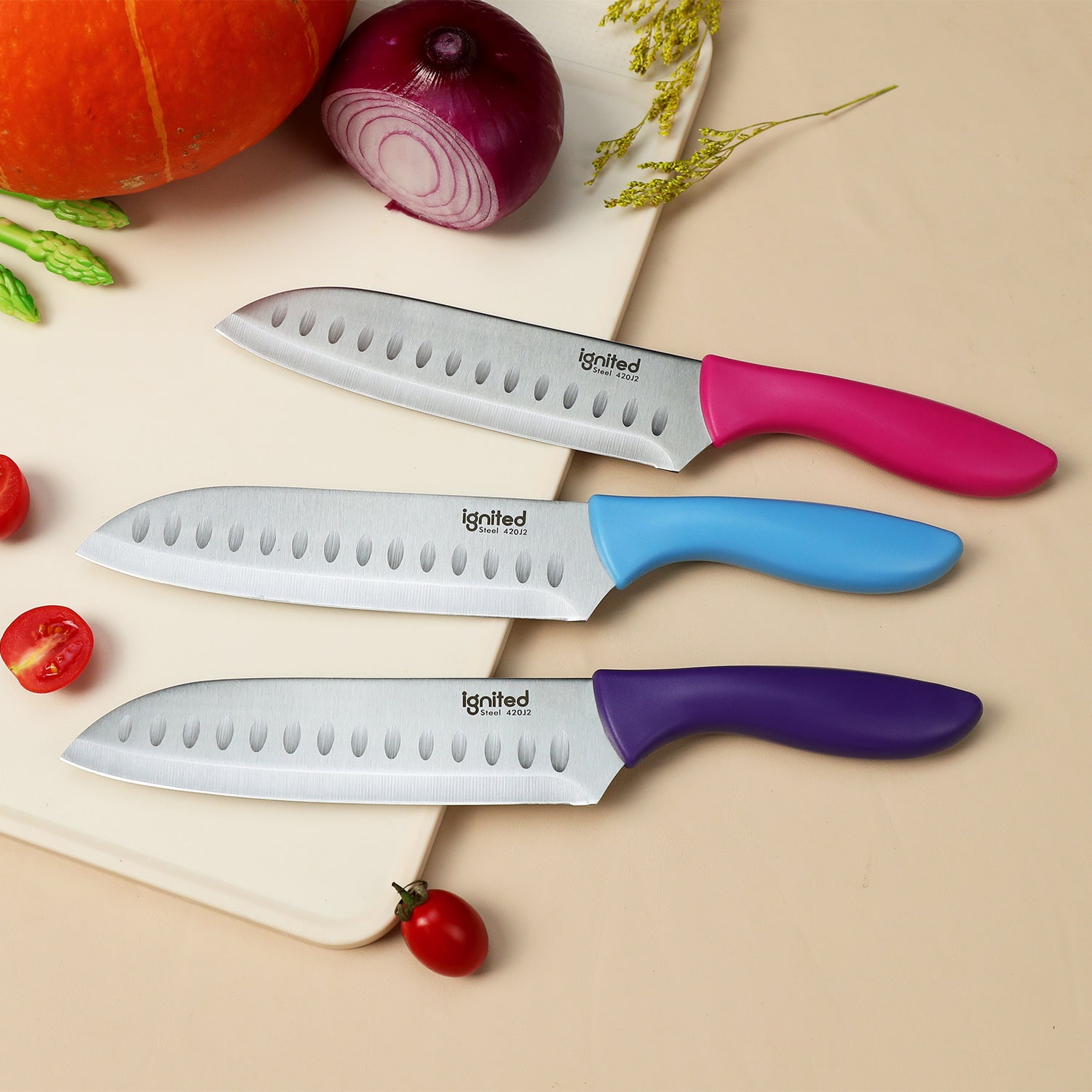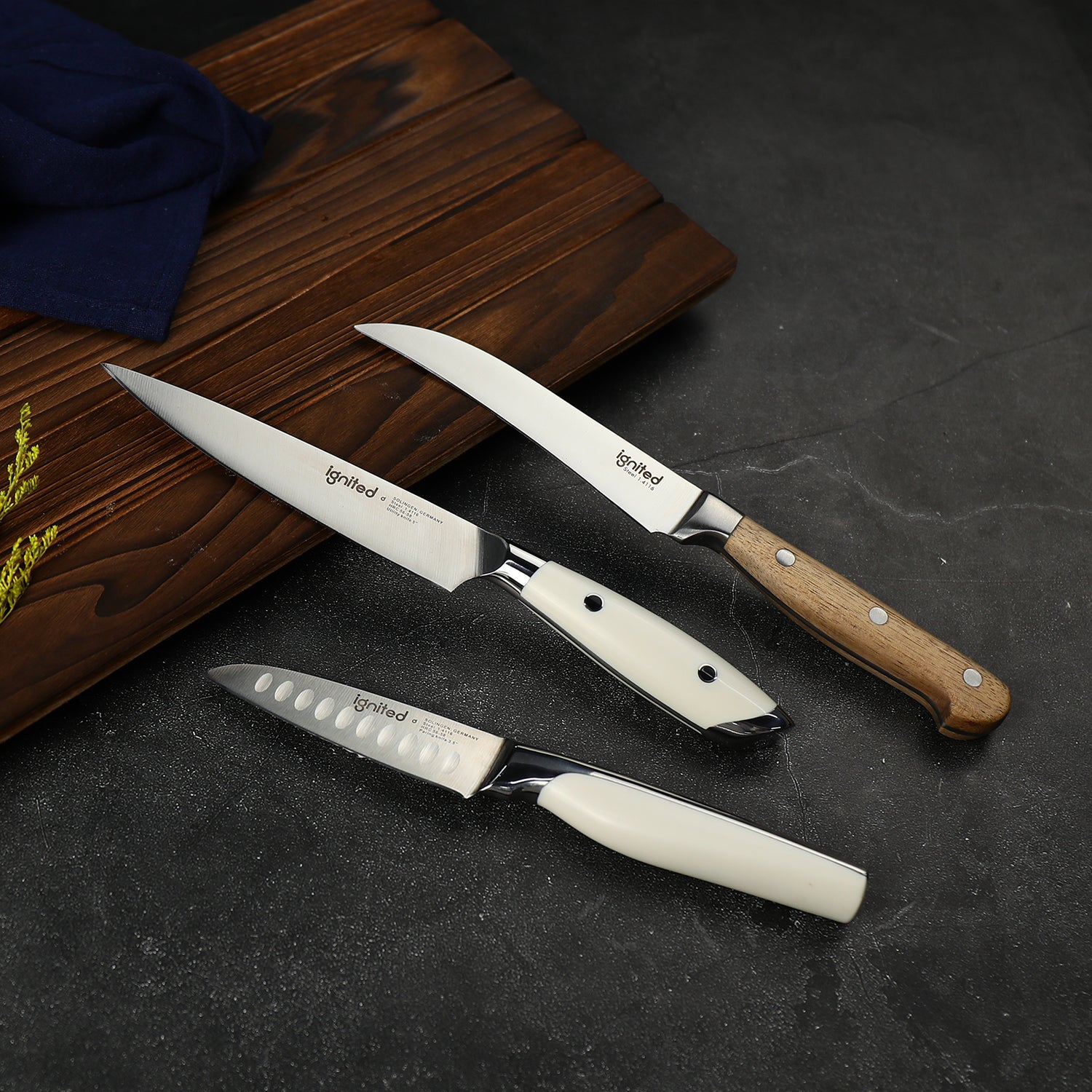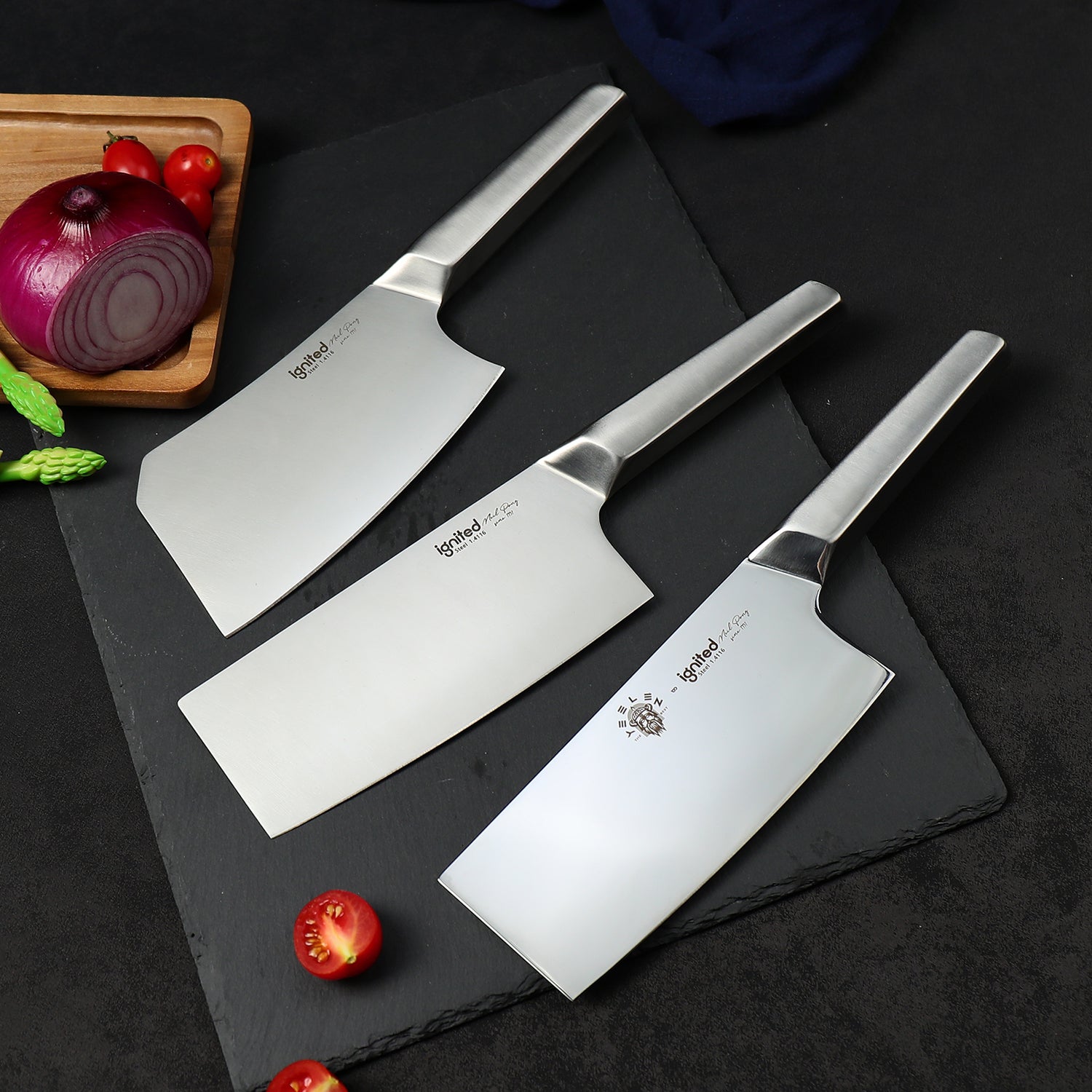Kitchen shears are one of the most versatile and essential tools in any modern kitchen. From trimming herbs to breaking down poultry, they tackle tasks that regular scissors simply can’t handle. But to keep them working safely and efficiently, proper cleaning and maintenance are crucial. This expert guide from Ignited Cutlery explains exactly how to clean, sharpen, lubricate, and store your kitchen shears for long-lasting performance.
Why Proper Cleaning and Maintenance Matter
Keeping your kitchen shears clean and well-maintained protects your investment and ensures safe, hygienic food prep. Well-cared-for shears:
- Stay sharper for longer, delivering clean, precise cuts
- Last for years without rust or corrosion
- Help prevent food cross-contamination
- Are safer to handle, reducing the risk of slipping or injury
Step 1: Cleaning Your Kitchen Shears
Inspect and Disassemble
Before cleaning, inspect your shears for any stuck food particles, especially around the pivot joint. If your Ignited Cutlery shears are designed to come apart, carefully unscrew the pivot to separate the blades for a deeper clean.
Wash with Warm, Soapy Water
Use mild dish soap and warm water to clean all parts of the shears. A soft cloth or non-abrasive sponge works best. Pay extra attention to the pivot area and blade edges. Avoid using harsh scouring pads that may scratch the blade surface.
Rinse and Dry Thoroughly
Rinse the shears under clean water to remove all soap residue. Dry them immediately with a clean towel, wiping away from the cutting edge to protect the blade.
Sanitize (Recommended)
After working with raw meat or poultry, sanitize your shears by dipping them in a food-safe sanitizing solution, such as a diluted bleach solution (2 teaspoons bleach per gallon of water) for about 2 minutes. Dry completely afterward. Avoid bleach on parts made of aluminum.
Step 2: Sharpening Your Kitchen Shears
Sharp shears not only cut better but are safer to use. Dull blades require more force and are more likely to slip, causing accidents.
Tools You’ll Need
- Sharpening stone or file
- Vice or clamp (optional for stability)
- Protective gloves
Sharpening Process
- If possible, disassemble the shears for easier sharpening.
- Secure one blade in a vice or hold it firmly.
- Using a sharpening stone, run it along the cutting edge at about a 20-degree angle.
- Repeat until the edge feels sharp and smooth.
- Reassemble and test the sharpness carefully on scrap material.
Step 3: Lubricating and Protecting
Keep the pivot point moving freely and prevent rust by applying a small drop of food-safe mineral oil to the joint after cleaning and sharpening. Wipe away any excess oil to avoid attracting dust or food particles.
Step 4: Proper Storage
Safe storage helps protect the blades and prevents accidents. Store your shears in a dedicated knife block, a magnetic strip, or a protective drawer insert. Always keep the handles facing outward and away from edges where they could fall.
Additional Tips for Maintaining Kitchen Shears
- Use for Intended Purposes Only: Never use kitchen shears to cut wire, metal, or other hard materials.
- Clean Promptly: Rinse and clean your shears immediately after use to prevent food residue from drying and causing rust.
- Hand Wash Preferred: Even if labeled dishwasher-safe, hand washing preserves the sharpness and handle condition longer.
- Sharpen Regularly: Check sharpness every few months, depending on use.
Frequently Asked Questions
How often should I clean my kitchen shears?
Clean them after every use, especially after cutting meat or poultry, to prevent bacteria buildup and rust.
Can I put my shears in the dishwasher?
Some models are dishwasher safe, but hand washing is recommended to maintain blade sharpness and handle integrity.
How do I know when my shears need sharpening?
If cutting requires extra force or the cuts become ragged, it’s time to sharpen your shears.
What oil should I use for the pivot?
Use a food-grade mineral oil. Avoid cooking oils that can go rancid over time.
Is it safe to sanitize with bleach?
Yes, a mild bleach solution can effectively sanitize your shears. Rinse and dry thoroughly afterward, and avoid using bleach on aluminum parts.
Conclusion
Proper cleaning and maintenance are essential for getting the best performance and longest life from your kitchen shears. By following these steps and investing in well-designed tools from Ignited Cutlery, you’ll enjoy safe, efficient, and hassle-free food prep every time. Explore our full collection of high-quality kitchen tools to upgrade your cooking experience today!




